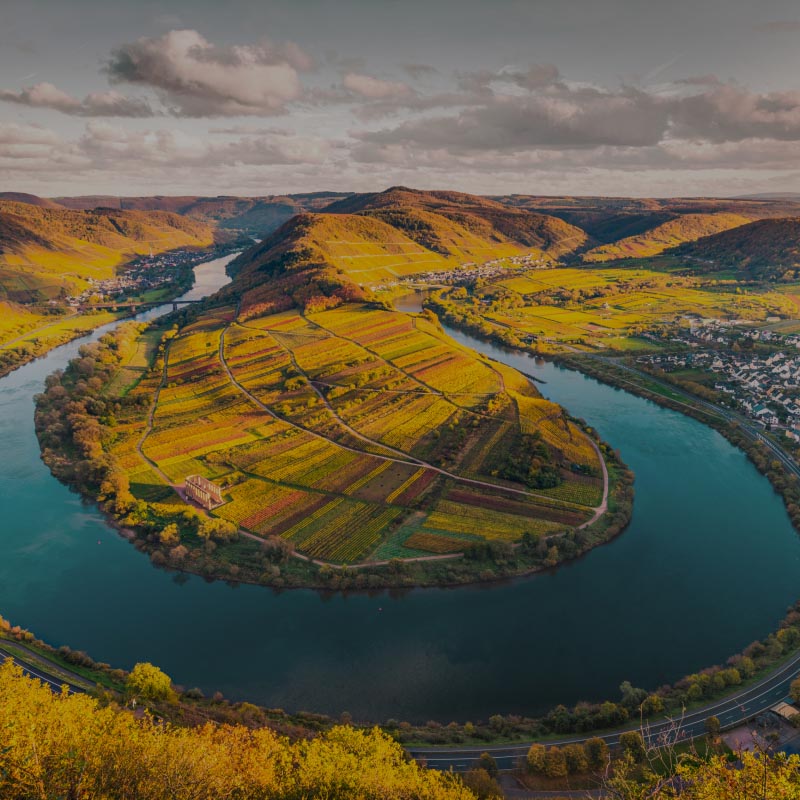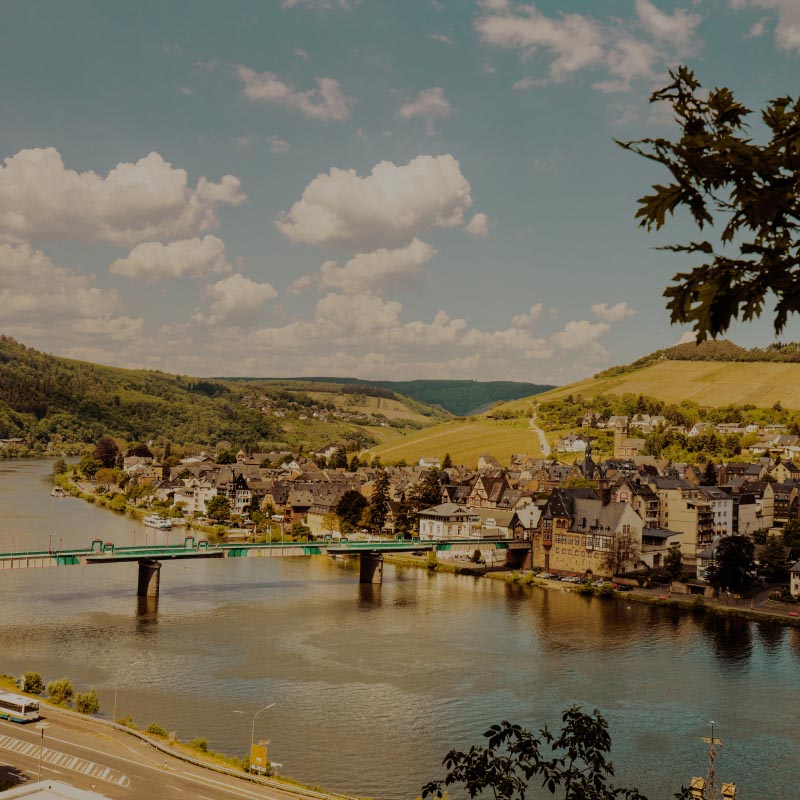When the word Mosel is spoken, you almost certainly think of wine. That’s no wonder, as the river, which has its headwaters in France and flows into the Rhine, is home not only to the second-largest Riesling cultivation area but also to the world’s largest steep-slope wine-growing region. It’s all about extreme inclines here, especially at Calmont, the steepest vineyard in the Europe.
“With so many sheer superlatives, you should probably just try a sip first.”
With so many sheer superlatives, you should probably just try a sip first. And then check out our enchanting towns and cities, including what is likely the oldest city in Germany, Trier, as well as what is likely the oldest center of wine in Germany, Neumagen-Dhron.
Steep slopes, fine wines

Cultivated area
Over more than 8,500 hectares, it is primarily white wines that come from this region, with red wines’ origins making up the remaining 10 percent of the vineyard land.
Nature, culture, and Riesling – the order in which you want to discover the highlights of the Mosel region is up to you, of course. However, you should definitely allow enough time to experience everything the area has to offer. In view of the many possibilities, it’s easy for time to get away from you.



River bends of the Mosel
The beautiful views of vineyards and villages on the river bends of the Mosel are unique. The view from the top of the 380-meter-high Calmont vineyard is particularly spectacular, and with an impressive 65-degree slope, Calmont is famous throughout the world as Europe’s steepest vineyard.

Trier
Trier offers numerous sights, including the Porta Nigra, the Imperial Baths, and the Basilica of Constantine. As you would expect, the buildings from the era of ancient Rome are also UNESCO World Heritage. Even the Roman emperors resided here, ruling the northwestern portion of their empire from the city.

Eltz Castle
If you want to get the feeling that you just stumbled into a fairy tale, then you should definitely visit Eltz Castle. This medieval castle, which has been owned by the same family for more than 800 years, stands in the middle of a forest and offers enchanting views of the Mosel valley.

Traben-Trarbach
It’s hard to say which town on the Mosel is most beautiful. Traben-Trarbach is definitely among the top contenders. This climatic health resort town has a picturesque waterfront promenade and fascinating Art Nouveau houses.
Further information can be found here:
Tourism and Experience
Investments
Make it in Rhineland-Palatinate


